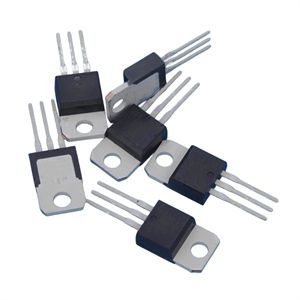Date:2024-11-25 Categories:Product knowledge Hits:407 From:Guangdong Youfeng Microelectronics Co., Ltd
Structure of thyristor:
A P1N1P2N2 four layer three terminal device based on silicon single crystal, created in 1957. Due to its characteristics similar to vacuum thyristors, it is internationally known as silicon crystal thyristors, abbreviated as thyristors. Due to the initial application of thyristors in controllable rectification, they are also known as silicon controlled rectifier components, abbreviated as thyristor SCR.
In terms of performance, thyristors not only have unidirectional conductivity, but also possess more valuable controllability than silicon rectifier components (commonly known as "dead silicon"). It only has two states: on and off.
Controllable silicon can control high-power electromechanical equipment with milliampere level current. If the frequency exceeds this range, the average current allowed to pass through will decrease due to significant increase in component switching losses. At this time, the nominal current should be downgraded for use.
There are many advantages to thyristors, such as: controlling high power with low power, with power amplification factors up to hundreds of thousands of times; Extremely fast response, turning on and off within microseconds; Contactless operation, no sparks, no noise; High efficiency, low cost, and so on.
The weakness of thyristors: poor static and dynamic overload capacity; Easy to be disturbed and misled.
Controllable silicon can be classified into three types based on their appearance: bolt shaped, flat plate shaped, and flat bottom shaped.
Regardless of the shape of thyristors, their chips are a four layer P1N1P2N2 structure composed of P-type silicon and N-type silicon. It has three PN junctions (J1, J2, J3), with anode A leading from the P1 layer of the J1 structure, cathode K leading from the N2 layer, and control electrode G leading from the P2 layer. Therefore, it is a four layer three terminal semiconductor device.

Previous: Classification, Structure, and Principle of MOSFET